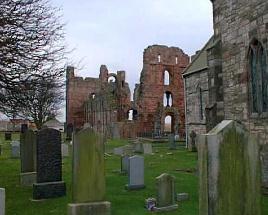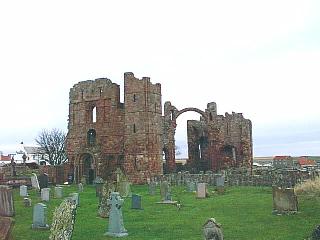
Holy Island (Lindisfarne)

| Holy Island |
| Newton & Craster |
| Norham |
| Seahouses |
| Warkworth |
| Wooler |
Holy
Island or Lindisfarne as it was originally known, is one of the most important
sites in the history Christianity in Britain. It was here in AD635
that St Aidan founded a monastery that was to become the spiritual
and educational heart of Northumbria in its 'golden age '. Here, amongst
his beloved animals and birds, St Cuthbert sought respite from his missionary
work. Today that same peace can still be found, for twice each day the tide
sweeps across the sands, severing the link with the mainland for several
hours.
 |
Lindisfarne Priory
Photo by Stuart Brown |